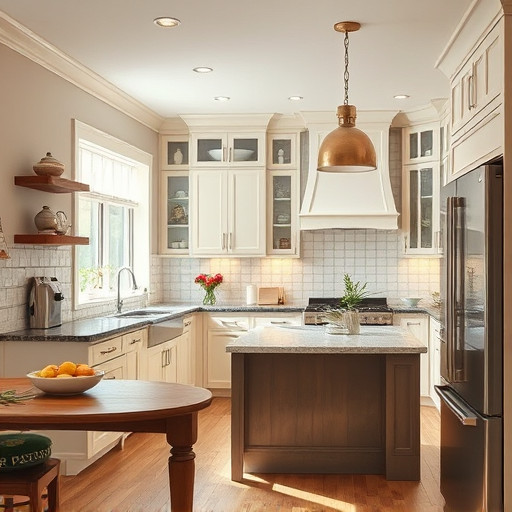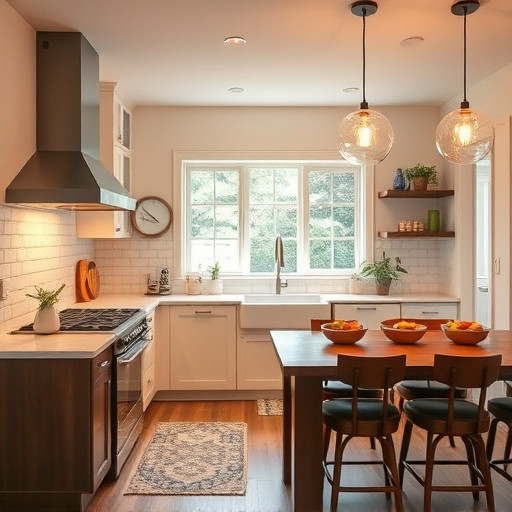Looking to transform your kitchen into a functional and efficient space? This guide offers invaluable insights for maximizing your kitchen’s potential through strategic renovations. From assessing layout and storage needs to implementing design strategies that enhance workflow, we cover it all. Discover tips on optimizing counter space, incorporating built-in features, maximizing natural light, and choosing durable, low-maintenance materials. Elevate your culinary experience with these essential kitchen renovation tips.
Assessing Your Current Kitchen Layout and Needs

Before diving into kitchen renovations, it’s crucial to assess your current layout and needs. Start by evaluating how you currently use your space – do you have enough storage for all your cookware and food items? Is there adequate counter space for meal preparation? Consider the flow of traffic in your kitchen; is it easy to move around while cooking? Identify areas that are underutilized or, conversely, overcrowded, as this will guide your renovation decisions.
Take note of any specific challenges you face, such as limited cabinet space, awkwardly placed appliances, or inadequate lighting. Also, think about your lifestyle and culinary habits – do you enjoy entertaining guests in the kitchen? Do you frequently prepare large meals or follow intricate recipes? Understanding these aspects will help ensure that your kitchen renovations enhance your efficiency and enjoyment of cooking and entertaining.
– Understanding traffic flow and work triangles

In optimizing your kitchen for maximum functionality and efficiency, understanding traffic flow and work triangles is paramount. These concepts are fundamental to any successful kitchen renovation, as they guide the arrangement of appliances, cabinets, and countertops, ensuring a seamless and safe workspace. Traffic flow refers to how people move within the kitchen—from preparing ingredients to serving meals—and it’s crucial to minimize obstructions and create logical pathways.
Work triangles, on the other hand, involve the placement of three primary areas: the sink, stove, and refrigerator. Ideally, these should form a triangle with legs measuring 4 to 6 feet to facilitate efficient movement and work patterns. Adhering to these principles can significantly enhance kitchen performance, reducing time spent searching for tools or navigating around obstacles during meal preparation and clean-up. Kitchen renovations that consider traffic flow and work triangles create spaces that are both aesthetically pleasing and highly functional.
